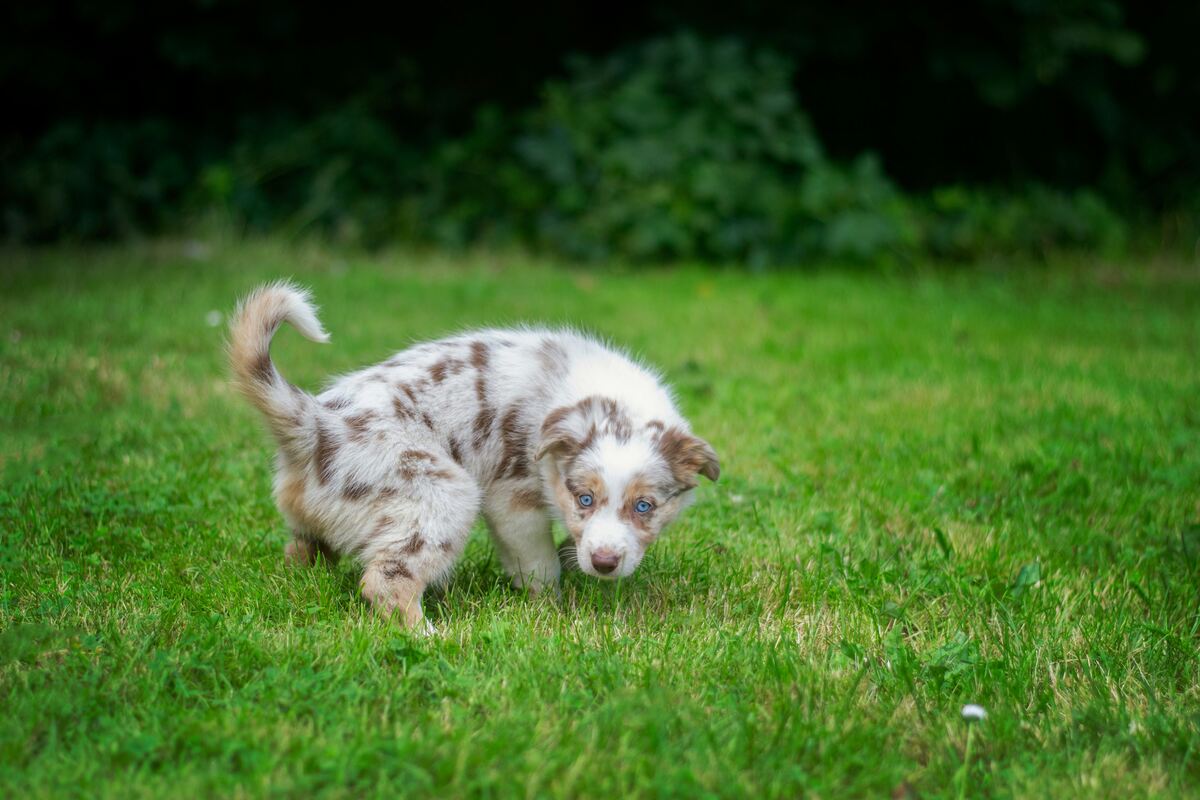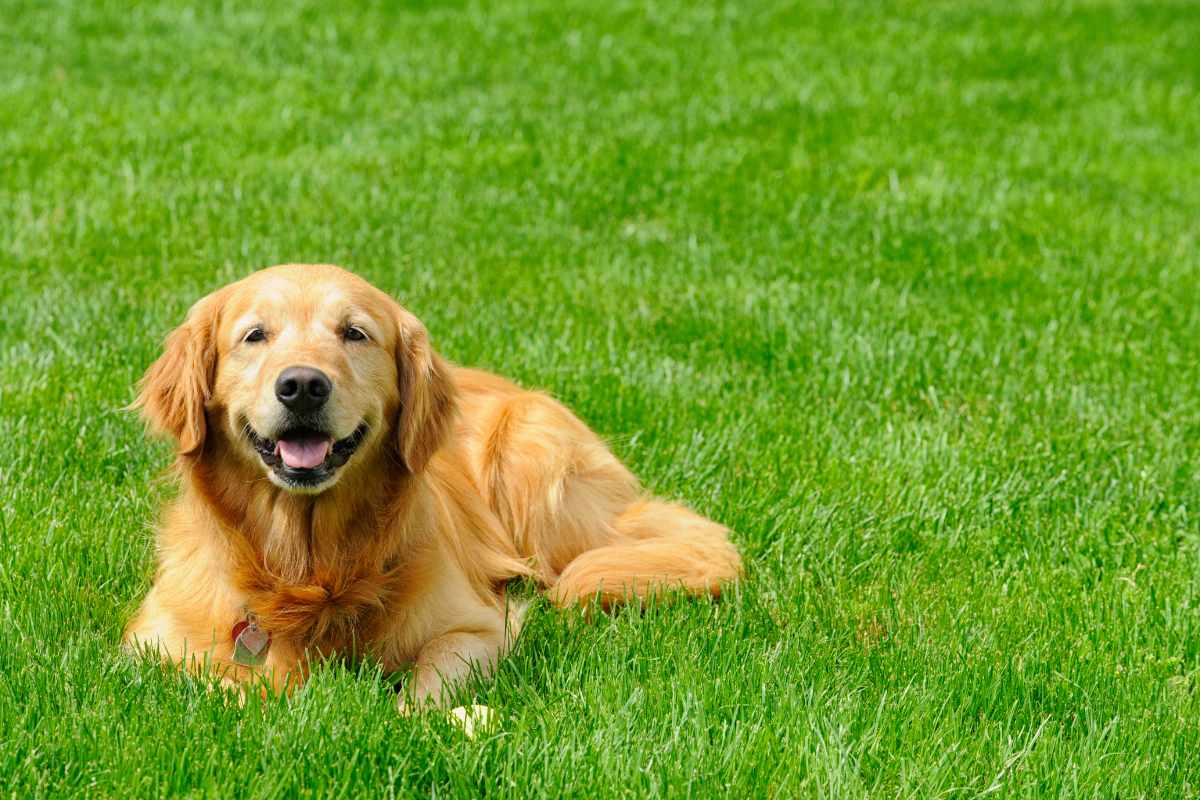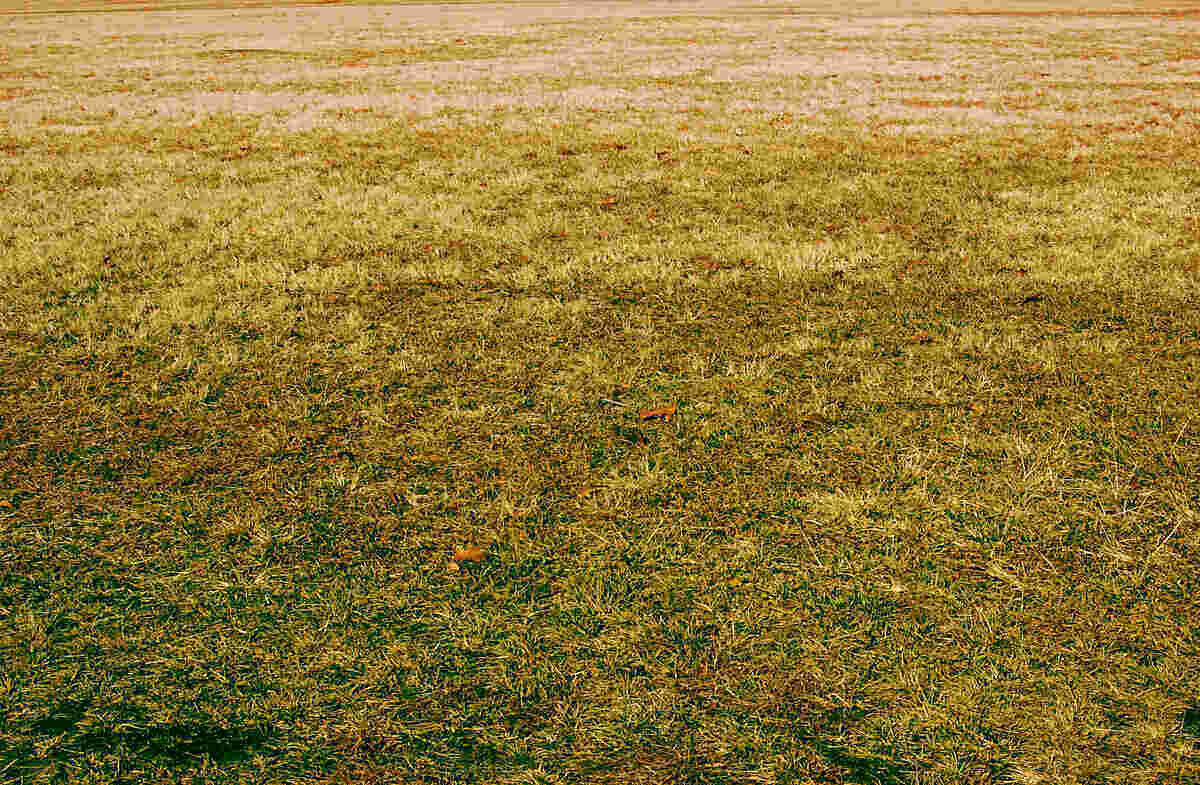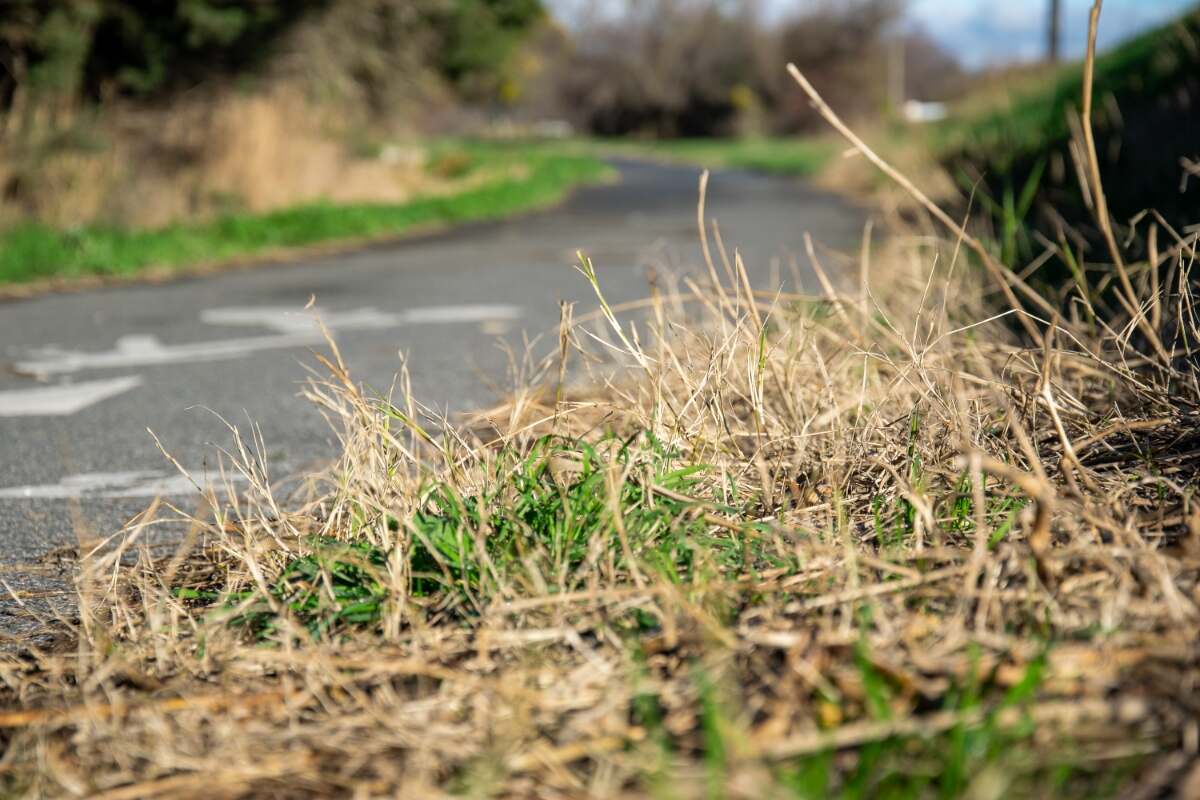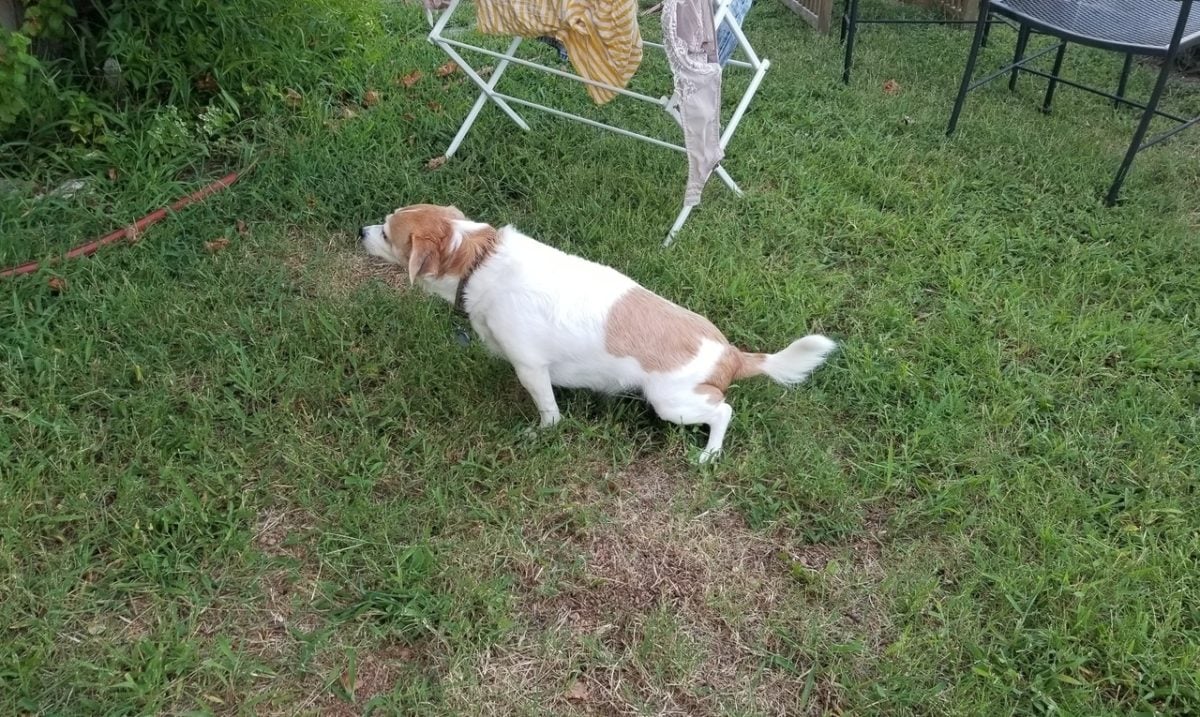
‘Why does dog pee kill grass?’ you mutter as you eye your lawn’s brown patches. Blame nitrogen. You can fix your lawn by watering down the urine, training your pup to pee elsewhere, and overseeding.
While nitrogen is essential for healthy grass growth, too much of it, like in dogs’ urine, can damage the grass. The good news? Your furry pals and green grass can coexist. It’s all about minimizing the ‘nitro-pee’ impact on lawns.
Here’s everything you need to know about the mysterious lawn spots dogs “accidentally” leave behind, how to nurse your grass back to good health, and how you can prevent damage in the future.
Does Dog Pee Kill Grass?
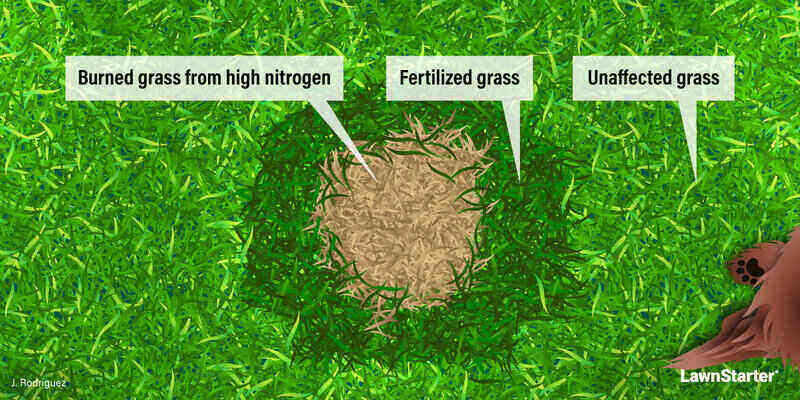
It is without a doubt that dog pee can burn the grass, leaving unsightly yellow or brown patches. But is this a rule carved in stone, applicable to all dogs? Not really. The lethal effect of dog pee on grass boils down to several factors, including:
- The concentration of your pet’s urine;
- How often do they repeat their lawn offense;
- Dog’s size and diet;
- Your lawn grass type.
Dogs pee on your lawn, and their urine contains nitrogen and associated salts as a byproduct of protein metabolism. Plants need nitrogen to photosynthesize effectively and grow, so, in theory, a little extra nitrogen should be great for your grass, right? It’s like a built-in lawn fertilizer that comes with every game of fetch.
However, when your pet keeps marking the same spot back-to-back, this spells trouble. It’s not exactly ‘doomsday’ on day one, but constantly drenching an area could drown it in excess nitrogen.
Here are some interesting facts about the tricky nature of nitrogen and dog pee’s impact on your green spaces:
- Dog’s Diet: Dog food is deliberately protein-rich to keep your pets healthy. High-protein diets generate high nitrogen waste content. So, what’s good for them ends up as a scorching drawback for your lawn.
- It’s Not About the Dog Pee’s Acidity: Dog urine’s pH level does not harm your grass. While extremely acidic or alkaline conditions can damage turfgrass, a dog’s urine usually ranges from 6 to 8 on the pH scale; this is fairly neutral and not harmful for turf.
- Gender-Neutral Grass Spots: While it’s true that male dogs usually wander and urinate along the way, marking trees and shrubs instead of urinating on a flat lawn, they can still cause spotting. Young and older males often squat rather than lift their legs to pee, leaving concentrated areas of urine in the same way that females do.
How to Treat Dog Urine Spots on Grass
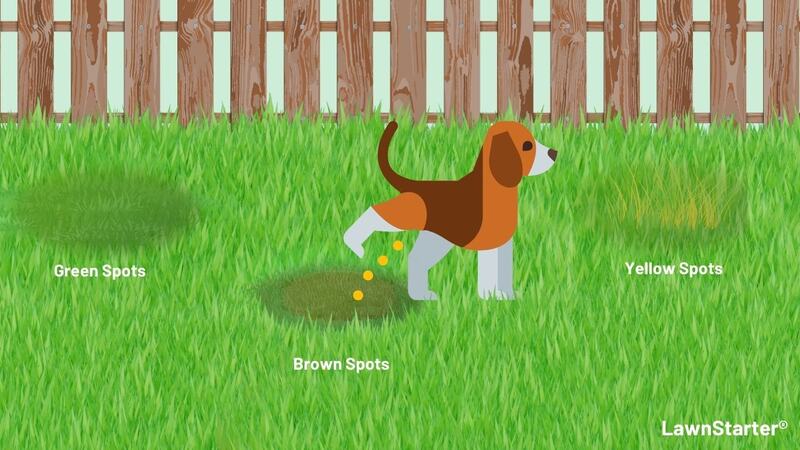
Dog urine spots are an all-too-common sight for dog owners. But just because the damage is done, it doesn’t mean you can’t reverse the effect and restore your grass to its prime.
Step 1: Identify The Urine Spots
The first order of business is identifying the problematic patches. A doctor can’t treat a patient without knowing what’s wrong, and the same principles apply to your lawn.
Dog urine spots usually appear as round patches of yellow or brown grass surrounded by an outer ring of greener grass. The green outer circle results from the diluted nitrogen at the edges acting as a fertilizer.
Here are some scenarios you might encounter:
- Brown Spots – When you see brown spots, it suggests the grass might be dead. However, don’t lose hope as there may be live roots underneath.
- Yellow Spots – These are less severe and signify grass damage that can possibly be recovered with proper care.
- Dark Green Spots – The grass hasn’t been hurt but is in danger of excessive nitrogen concentration, which could turn into a yellow or brown spot over time.
- Disease or Pest Issues, No Dog Urine Problem – It can be ruled out by assessing the patch pattern and your dog’s urination habits. Pests or fungi usually afflict a larger area, while urine spots are more sporadic and randomly spaced.
If disease or pest issues are confirmed, you’d need to treat them differently. We recommend consulting a lawn care professional for proper diagnosis and treatment.
Pro tip:
Are you still not sure if it’s just dog pee damage? Here’s a trick: Dog urine doesn’t affect root strength, so tug at your grass. If it doesn’t pull up easily, your lawn’s issue is likely dog-related. However, if the grass detaches from the soil quickly, then you’re dealing with weak roots possibly caused by grubs or fungi.
Step 2: Take Care of Dark Green Spots
If the dog-pee-affected spots are green, they’ve been stimulated by the nitrogen content (and not damaged.) At this stage, you can deploy two strategies to mask these spots and prevent them from developing further:
- Increase Nitrogen Fertilization: Ironically, additional nitrogen might just be what the doctor ordered. By increasing your lawn’s nutrition intake with consistent fertilization, you amplify the growth and coloration of the entire yard, blurring those darker green spots caused by dog pee.
However, be careful not to overpack the soil with nitrogen. Moreover, never fertilize during the heat of summer, as it can do more harm than good to your turf. Check our guide to lawn fertilization for a comprehensive understanding.
- Water the Lawn Thoroughly: Just add water! Water aids in diluting nitrogen concentrations to manageable levels that your grass can utilize, reducing any burning effect.
Step 3: Go Full Repair Mode on Yellow Grass Spots
The third step involves nursing your grass back to health from those golden showers:
- Rinse and Repeat: As with green spots, your immediate response should be to water the area before the urine gets a chance to sink into the soil. Grab that garden hose and give the area a good soak. This quick rinse helps to wash away the salts and nitrates in the urine, reducing their harmful effects on your lawn.
- Apply Lawn Repair Treatment: You can purchase lawn repair treatments at most garden centers. These solutions typically contain organic enzymes or bacteria that break down the nitrogen in dog urine, making them less harmful to your grass.
For more tips on fixing a yellow lawn, check out our guide: Yellow Grass: Causes and Treatment.
They’re easy to use and usually involve mixing a concentrate with water and spraying it onto the affected areas. Follow the instructions on the label for the best results.
*Note: If a patch is completely brown and shows no sign of recovery after treatment, you may have to remove the dead grass and reseed that area.
Warning:
Regardless of what your neighbor or friend might tell you, there’s no magic home remedy that cures urine pet damage. If anyone swears by a dose of baking soda, gypsum, or dish soap on the lawn, think twice before taking action. These “solutions” could cause more harm than good.
Here’s why: Baking soda and gypsum contain salts and may increase the problem. Dishwashing detergent is a surfactant and could help with water movement through the soil. But other ingredients in the soap might burn the grass itself, so it’s best not to add to the problem. So, stick with proven lawn repair treatments and proper water management.
Step 4: Repair Dead Brown Spots (Reseeding)
Reseeding is your comeback strategy for when the grass decides to call it quits. Here’s how you can revive a dead lawn:
- Mow the Grass: If you haven’t mowed the grass already, go ahead and do so. This will make it easier to sow the new seeds. Plus, you won’t be able to mow for a few weeks while the new grass is setting in, so it’s best to start with a nicely trimmed lawn.
- Dig Out the Dead Turf: Using a garden trowel, remove the dead grass, about half an inch to one inch. Make sure to clear the area entirely of any old roots because they can hamper new grass growth.
- Water Down the Soil Again: Decomposing grass and urine-saturated soil can still contain a high nitrogen concentration, which might damage new seeds. To avoid this, thoroughly soak the area with water to dilute residual nitrogen.
- Prepare the Soil: Use a hard rake to loosen up the topsoil, then mix some compost or fresh topsoil into this. Doing so provides your seeds with the necessary nutrients, giving them the best chance at life.
- Sow Your Grass Seeds: Evenly spread grass seeds over the prepared area following the seeding rate recommended on their packaging. Ideally, opt for a seed mix that matches your existing lawn type for uniformity.
- Apply a Thin Layer of Soil or Compost: To protect the seeds and offer extra nutrients, cover them with a thin (about a quarter-inch) layer of soil or compost.
- Water: Water your freshly sown seeds lightly to improve seed-to-soil contact and promote germination. Use a gentle shower setting on your hose for this or a watering can if you are only dealing with small patches; anything too forceful could disturb the seeds’ setup.
- Keep the Soil Moist: The new seeds need consistent watering, usually a light sprinkling twice daily until the new grass is about an inch tall. Once the grass is around three inches high, you can start mowing again.
Pro Tip:
- The best time to overseed cool-season grasses, like Kentucky bluegrass and fescue, is between mid-August and the end of September. Warm-season grasses should be overseeded in late spring to early summer. (Here is our guide on How to Overseed a Lawn in 8 Simple Steps)
How to Prevent Spotty Grass in Lawns
You don’t need to live with a patchwork lawn – there are some practical methods to prevent this recurring issue. Remember, prevention is always better than cure. And it’s applicable here as well:
Spray Water
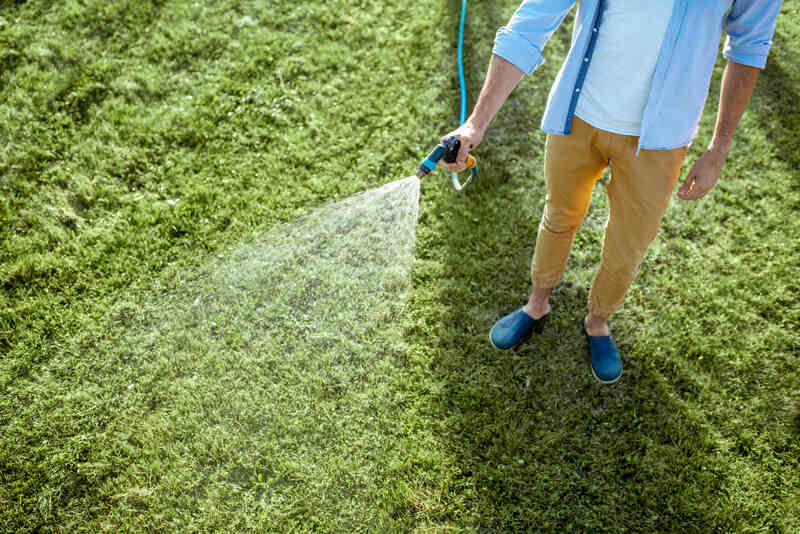
As we noted earlier, quick action can save your grass from pee onslaught. The moment you see your dog finish their business, sprint for the watering can or garden hose. Thoroughly watering the area can dilute the nitrogen concentration before it damages your lawn.
Walk Your Dog
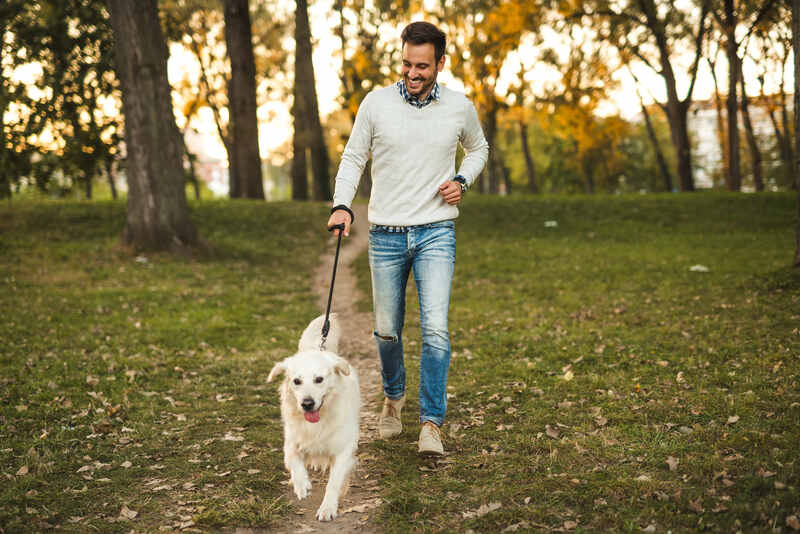
Rather than risking your lovely green lawn, taking your canine companion around the block may be a better alternative. Walking your dog accomplishes three things in one activity:
- You get your daily dose of physical activity;
- Give your pet some outdoor fun and exercise;
- Let them pee elsewhere (always remember to clean up after your dog).
Peeing during a walk can save your grass and, in the long run, increase your dog’s happiness and health. Surely, that makes up for any inconvenience of stopping mid-walk to clean up their mess.
Train Your Pup
Did you get a new pup and find yellow spots on your grass? It’s easy to jump to conclusions and assume another dog breed might have been easier on your lawn. That’s simply a myth. All pups can leave their ‘signature.’ But cheer up, dog parents! No matter if you’re a first-timer or an old hand at this, it’s always the right time for a little potty training fun.
Training your dog to pee in one area can help decrease the number of dead spots on any given lawn. Pick a corner of the yard for the family canines to do their business. Reward the pups when they do business there, and before you know it, you’ll only need to take care of one damaged area instead of 20 pee spots on your grass.
Pro Tip: Consider making a doggy potty area if you don’t want any spots to fix or water later. You can use tall grasses, mulch, or dog rocks that absorb the urine better than regular lawn grass and won’t leave any lasting brown spots. You can also resort to pads made of artificial grass for your dog to pee in.
Let Your Dog Drink More
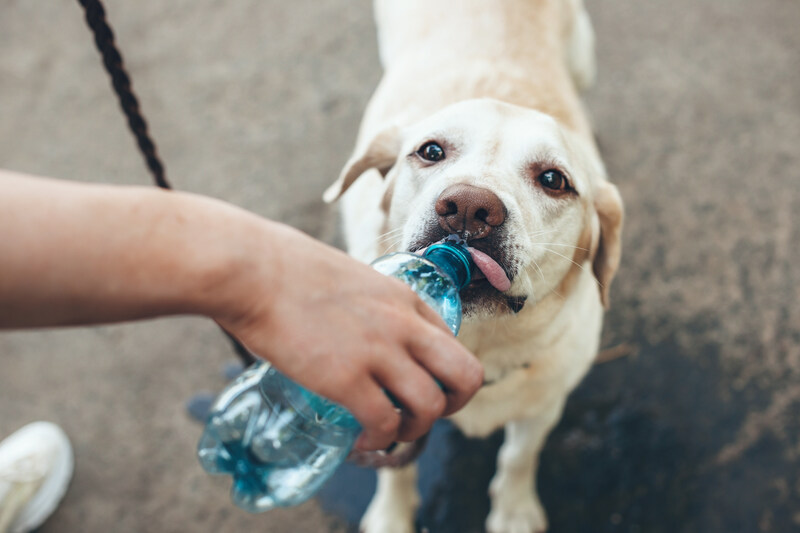
Sounds counterintuitive? It’s not. If your dog is constantly leaving burn spots, it could be a sign that their pee is too concentrated with waste products. So, increase hydration to dilute the salts and nitrates in your pet’s urine.
Pro Tip:
- Dogs need about one ounce of fluids per pound of body weight each day.
- Don’t force water into your pet. It may lead to overhydration, which can cause more serious problems. You can play more with them outdoors, encourage them to work up a thirst naturally, provide multiple water bowls around the house, or experiment with pet fountains that entice dogs to drink more.
Change Dog Diet
A controversial (and often last-ditch) solution might potentially change your dog’s diet after speaking with a veterinarian. One option involves adding supplements that lower urinary nitrogen levels.
*Note: You shouldn’t blindly add things to your friend’s food bowl without seeking professional advice first, as what might help the lawn could harm your dog. Therefore, always consult with a vet before making any dietary changes for your pet’s sake.
FAQ About Your Lawn and Your Dog
What do dog urine spots on grass look like?
Dog pee spots on lawns are easy to identify: Brown or yellow patches about 3 inches in diameter, ringed with lush green grass that grows faster than the surrounding lawn. The outside circle receives a smaller boost of nitrogen that allows it to grow instead of burn.
Will grass grow back after dog urine burns?
Yes, grass can grow back after damage from dog urine. However, if the damage was severe enough to kill the grass roots in that area, you would need to reseed or sod those spots for grass to return. Wetting down the area with water as soon as possible after your pet pees can help minimize damage and allow quicker regrowth.
Does vinegar neutralize dog urine on grass?
No, vinegar does not neutralize dog urine on grass and can potentially harm it. Acetic acid in vinegar may burn your lawn or alter the soil’s pH levels, preventing grass from growing properly. The best way to minimize dog urine damage is through preventative methods like regularly watering your lawn to dilute high nitrogen levels.
Turn to the Lawn Care Pros
Is dog pee hurting your lawn and darkening your spirits? Are you tired of the brown patches and the sight of dead grass? Watering, reseeding, and training can be demanding tasks. Maybe you’ve tried busily performing canine-urine damage control but still wish to free up time for something more fun.
A local lawn care pro can step in to help turn things around. Dedicated lawn care experts understand your struggles, and have the experience, tools, products, and know-how to restore your yard’s charm while combating the effects of your dog’s pee.
Main Photo Credit: Daniel Ray / LawnStarter
